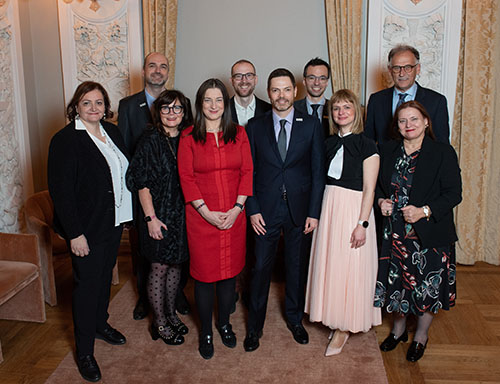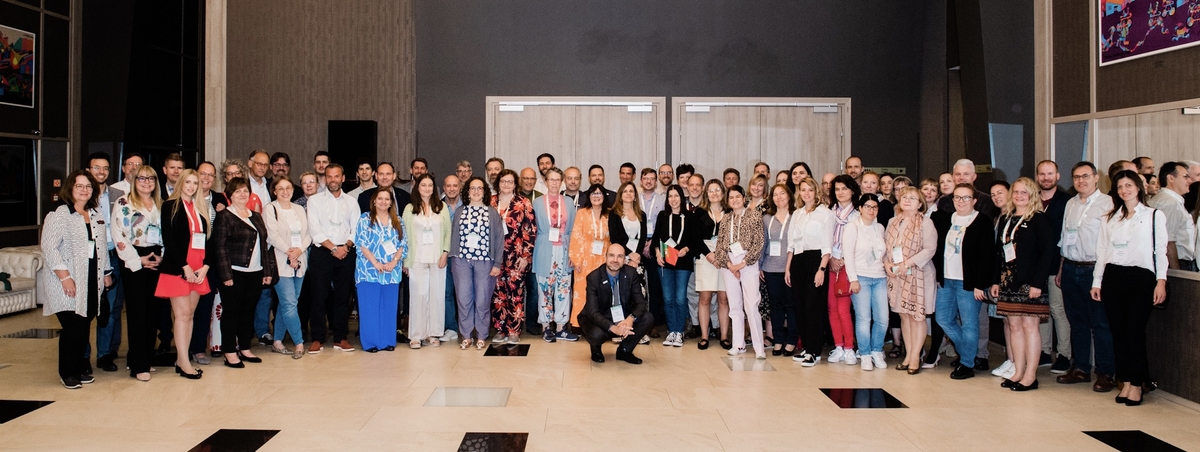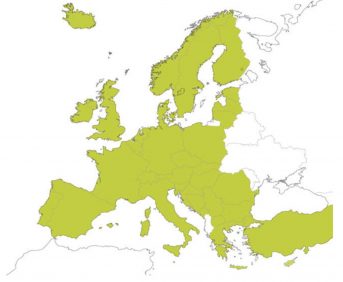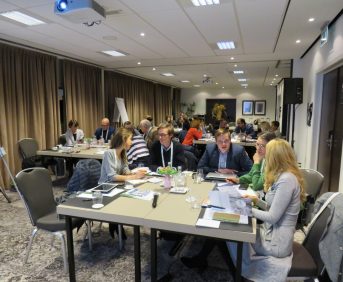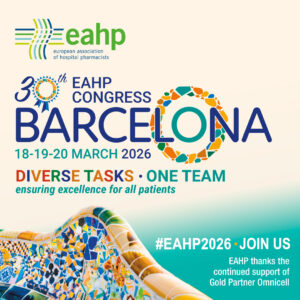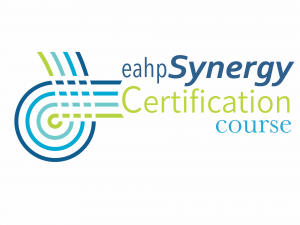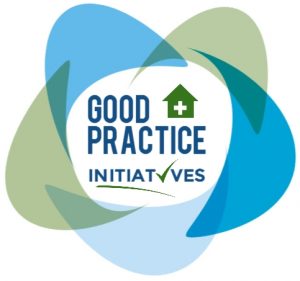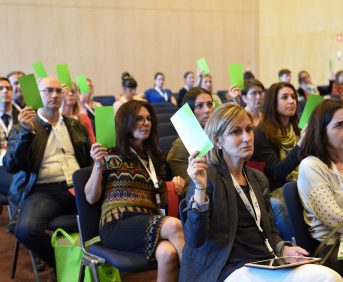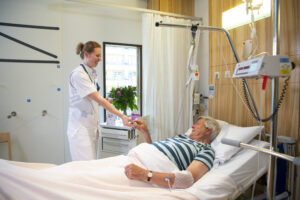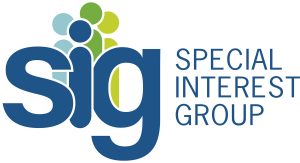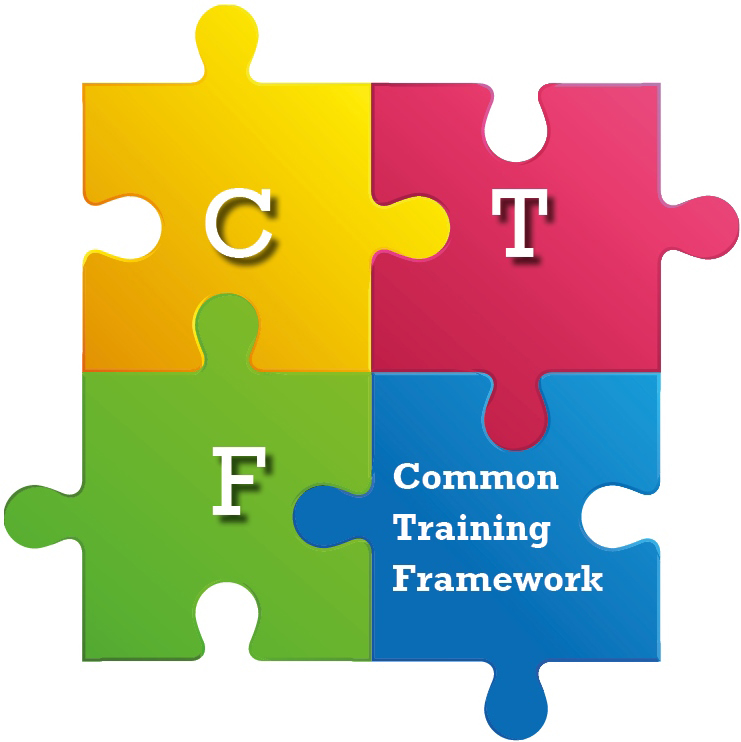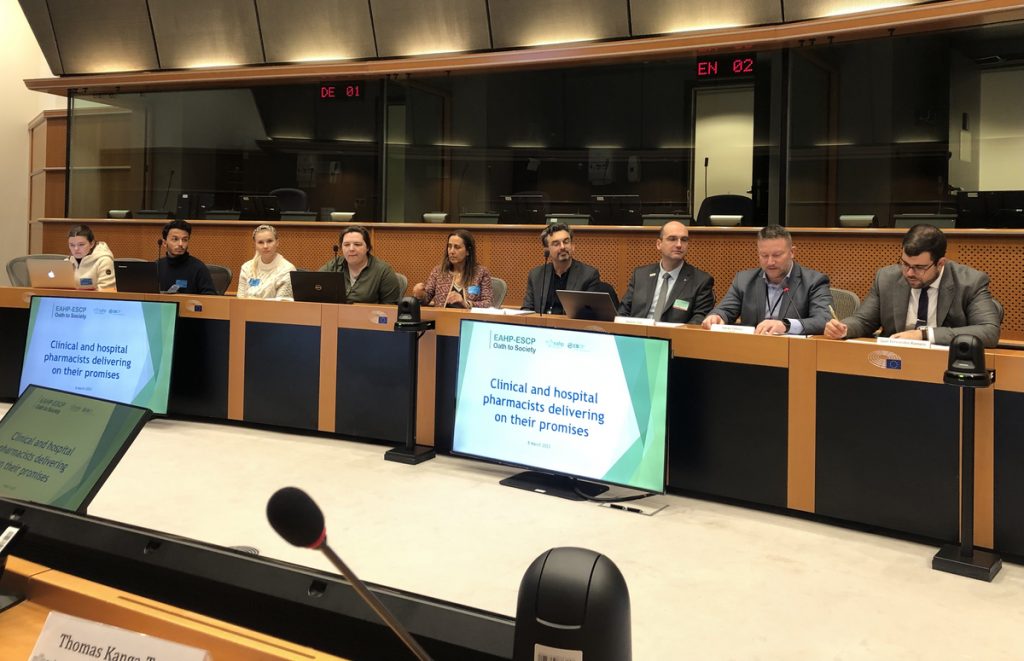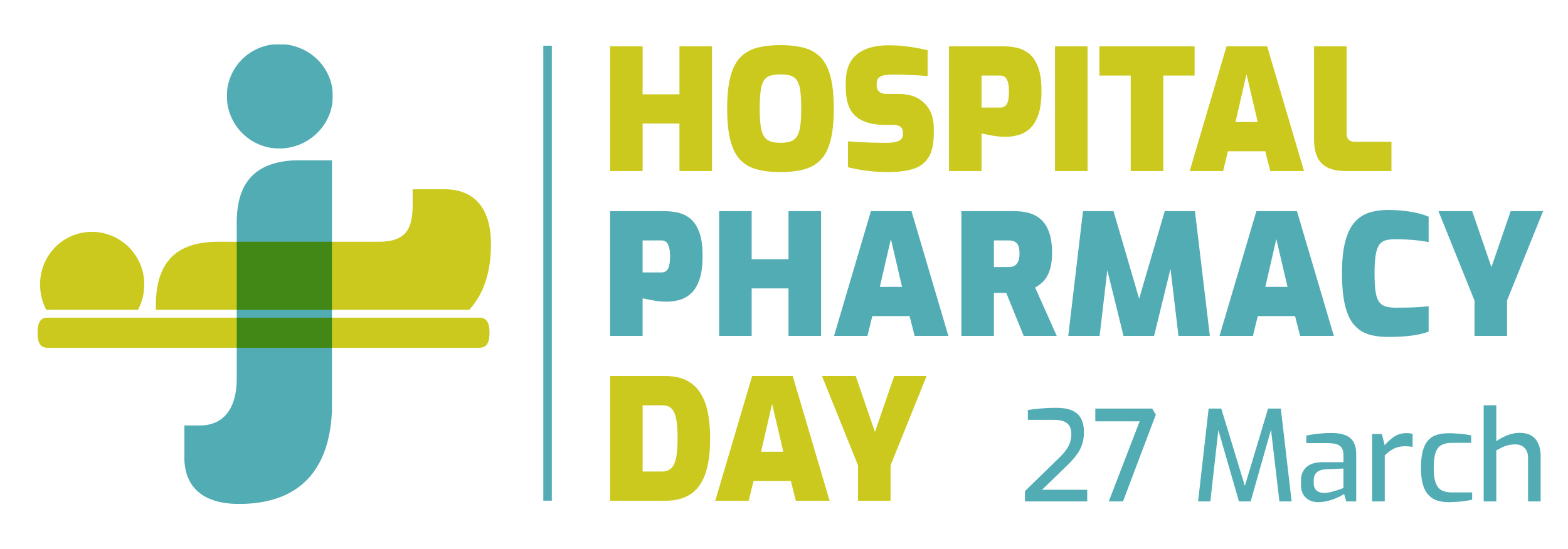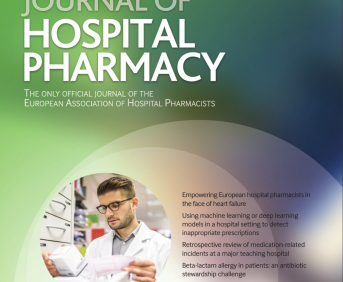Development of a podcast for student learning and motivation (the MUG-Hub)
Pdf

European Statement
Education and Research
Author(s)
Sian Williams, Connor Thompson
Why was it done?
Podcasts are generally accepted as a valuable tool for enhancing student engagement with course material and motivating students in educational settings. They also offer an exciting opportunity for allowing students to make connections between what is taught on the course and it how applies in the ‘real-world’ through discussion with practicing professionals.
What was done?
The Medicines Use Group (MUG) at the University of Brighton have co-created a series of podcasts (called ‘The MUG-Hub’) to increase student pharmacists’ access to and understanding of current issues related to medicines use and to provide information, inspiration and motivation around future careers in pharmacy.
How was it done?
A small group of teaching staff (including the authors) were matched with a student partner through a digital learning initiative run by the university. Through the process of co-creation a list of topic ideas and format considerations was collated and the podcasts developed and disseminated to the wider student body (podcast titles include ‘My career in pharmacy: reflections of a specialist liver pharmacist’, ‘Working in general practice as a pharmacist’ and ‘Designing an MPharm course fit for future pharmacists’).
What has been achieved?
A series of 30-60 minute podcasts has been created and is disseminated to student pharmacists on a monthly basis through the digital learning environment. The introduction of podcasts to the course enhances students’ development in terms of self-led learning, communication and collaboration and essential digital skills.
What next?
We plan to take the work forward by engaging more students in the creation of future podcasts and compiling topic lists for future episodes and surveying student engagement with the podcast.
Using virtual reality to introduce newly hired nurses
Pdf

European Statement
Education and Research
Author(s)
Stine Hygum Sørensen, Henrik Nielsen, Ulla Kloster, Anne Grethe Nørgaard Kyndi, Maja Vad Mortensen, Dorthe Ludvigsen
Why was it done?
The concept of medicine at Gødstrup Hospital is based on Patient involvement in the medicine process. Consequently, the patients bring their own medicine, which is stored in the patient’s room, and additional medicine is supplied in original packages. Medicine dispensing is performed in the patient’s room to allow patient participation. The medicine rooms at the hospital are quite small, because the majority of the medicine is with the patient, but it also makes medicine rooms unsuited for on-site training of new nurses.
What was done?
Virtual Reality (VR) technology was applied for introduction of newly hired nurses to medicine rooms at the hospital.
Newly hired nurses are given a four hour introduction to the concept of medicine at Gødstrup Hospital, Denmark. The introduction is given by an interdisciplinary team of a clinical pharmacist, a pharmacologist and an experienced nurse. The introduction is given in collaboration with the Centre for Research and Education (NIDO) once a month. This ensures that newly hired nurses are given the same, relevant introduction when needed.
Introduction to medicine rooms is part of the training for nurses in introductory positons. Using VR newly hired nurses are given a different and exciting introduction to medicine rooms.
How was it done?
In collaboration with the simulation unit at NIDO we made a VR-video to enable up to 20 new nurses to see the same introduction at the same time. Hospital Pharmacy staff is featured in the VR recording and guides viewers to specific parts of the medicine room, explaining important topics such as waste disposal, hygiene and anatomical therapeutic chemical (ATC) groups.
What has been achieved?
The participants are positive and give the following feedback to the VR segment of the introduction: “It was significantly easier to deal with as a newbie”. “It was very visual as being there in reality”. “There was time to learn in a calm environment”, “It worked fine as a lesson” and “It is a good change from backboard teaching.”
What next?
The monthly introductions continues and further collaboration with NIDO will result in lessons with topics such as pharmaceutical formulations and drug calculations. Perhaps VR will be included in this too.
National competition for pharmacy students in Bulgaria “become a hospital pharmacist”
European Statement
Education and Research
Why was it done?
There are five accredited faculties of pharmacy in Bulgaria – two in Sofia, one in Plovdiv, one in Varna and one in Pleven. The training is only full-time with a duration of 5 years, with 26 compulsory courses in which hospital pharmacy is covered to a very small extent. Only one of the faculties in Sofia offers the opportunity to specialise in clinical pharmacy during the studies, which include 30 hours of lectures and 45 hours of exercises in hospital pharmacy. The disinterest of graduating students in pursuing a career in hospital pharmacy prompted the BAHP Board to organise this competition to bring attention to hospital pharmacy in a non-traditional way.
What was done?
The Bulgarian Association of Hospital Pharmacists /BAHP/ organises during its annual conference a National Competition for Pharmacy Students “Become a Hospital Pharmacist” – for the first time in 2021. Since then, it has been held annually with increasing interest from students.
How was it done?
The areas in which the students will compete – Pharmacology and Pharmacotherapy, Regulation of Hospital Pharmacy and Practical part, as well as the regulations of the competition were determined. An invitation with information was sent to all faculties. For the year 2021, teams from three faculties participated, for 2022 four faculties, and for 2023 all faculties will participate. Each team has a scientific supervisor and the costs of participation are covered by the university.
What has been achieved?
1.Strengthening the links between the BAHP and the faculties
2. Repeatedly increased student interest in hospital pharmacy.
3. Increased number of students wanting to do their pre-graduate internship in hospital pharmacy
What next?
Continuation of the annual competition and deepening the collaboration with the faculties. It is also possible to organise such an event between different countries.
Change of local anaesthesia procedure to avoid suture breakage
Pdf

European Statement
Education and Research
Why was it done?
A wide range of women sustain a perineal tear after delivery with a need of perineal repair. If the suture material fails to last as expected, women might experience wound rupture, impaired healing, and inferior functional outcome.
A clinical observation of increased risk of early breakage of the suture material in women anaesthetized with Xylocaine spray for perineal tear repair, compared with women anaesthetized with Xylocaine gel led to this study. Thus, in an observation period of 9 months 79% of the women who had to go through early secondary wound repair due to suture failure, had received local anesthesia in the form of Xylocaine spray.
The Clinical Pharmacy was contacted by the Obstetric Department with the following inquiry; whether there is a pharmaceutical interaction between local anaesthetics and the suture material.
What was done?
An in-vitro experiment to compare the tensile strength of fast absorbable suture material when impregnated with various agents for local anaesthesia was performed.
How was it done?
An in-vitro experiment was performed in collaboration between midwives, pharmacists and the Danish Technological Institute. We impregnated 120 suture materials divided in four groups (Xylocaine Spray, Xylocaine gel, Isotonic Sodium Chloride and Ethanol 96%) for 72 hours at 37 degrees and then measured the tensile strength of the suture material.
What has been achieved?
In the experiment we saw that Ethanol and Xylocaine spray weakened the tensile strength of fast absorbable sutures. Use of Xylocaine spray containing ethanol for local anesthesia might lead to early breakdown of the suture material and wound rupture.
After the experiment the majority of obstetric departments in Denmark changed their procedure for local analgesia/anaesthesia during perineal repair from Xylocaine Spray to Xylocaine gel.
What next?
Observing and registering the suture breakage percentage in a period of 9 months after application of Xylocaine gel.
Publishing the results at a broader level.
Implementation of a simple continuing training programme for retraining operators in a clean room production
Pdf

European Statement
Education and Research
Author(s)
Maria Agerboe Sondrup, Anette Sand Østergaard
Why was it done?
Training of operators has previously been performed, however there was no consistent programme for continuing training in the department to secure optimal training of operators. Equally the effectivity and durability of the training was not evaluated. The aim was to establish a thorough system for continuing training focusing on ongoing confirmation of proper training as well as adaptation and optimization throughout.
What was done?
A programme for continuing training of operators was designed and implemented in a clean room production department by GMP-responsible operators and academics.
How was it done?
A template was designed for the programme. One module takes up to 3 months.
The template is the following:
Observation:
– Trainers observe operators in a clean room
– Current technique is observed and if necessary corrected
Training material:
– Developing educational material based on SOPs
– Short videos, PowerPoint presentations etc.
Individual training:
– Operators answer handed out multiple choice questionnaire (MCQ) by themselves
Group training:
– The correct answers to the MCQ are presented by the trainers at a plenary session
– All answers are discussed
Observation:
– Trainers observe operators in a clean room
– Current technique is observed and if necessary corrected
Evaluation:
– Trainers evaluate the training in terms of improvement from the first to the second observation
– Trainers write a report that is presented to the operators
What has been achieved?
A systematic and relatively simple training programme has been implemented. This streamlines the training of operators, thereby making it easier for the trainers to introduce new subjects and ensures that all new operators are trained the same as the experienced operators. The programme also makes the training system recognizable for the operators, which gives a higher compliance.
What next?
The program has only been implemented on processes related to production in clean room, but the training method can easily be applied to subjects outside of the clean room or in other healthcare settings. To involve the operators in the process, the second observation could be delegated to other operators and not just the trainers.
Advancing regulatory sciences closer to the patient care setting: a course development approach
Pdf

European Statement
Education and Research
Author(s)
Anthony Serracino Inglott, Maria Mamo, Amar Abbas, Luana Mifsud Buhagiar
Why was it done?
Regulatory science is not some detached activity performed in secluded offices but is applied by pharmacists as an integral part of their daily work, whether thought of as regulatory intelligence or not. This initiative endeavored to offer educational intervention, for streamlining a patient-centric culture and addressing gaps, while waning concerns regarding potential conflicts arising from regulator-stakeholder interactions.
What was done?
The Malta Medicines Authority (MMA), through the MMA Academy for Patient Centred Excellence and Innovation in Regulatory Sciences, implemented a course intended for collaborative synergy with professionals in patient care settings. Strengthening regulatory intelligence may provide substantial return on investment for the ultimate benefit of patients.
How was it done?
In April 2023, the MMA Academy completed registration as a Further and Higher Educational Institution. An accredited 3-day course, leading to an Award in Basic Regulatory Sciences (Malta/European Qualifications Framework Level 4), was launched across stakeholders. Twenty-four experts were engaged to deliver sessions on legislation, ethics, quality, information sources, digitalization, pharmacovigilance, good practices, risk, and avoiding victims of the system. Registrations were initially slow, owing possibly to the holiday season, increasing to maximal venue capacity following reminder mails and media posts. The course was delivered in September and feedback collected through a Likert scale evaluation exercise.
What has been achieved?
Thirty participants (8 from public, 22 from private entities) completed the course successfully. All respondents to the course evaluation exercise (n=24) expressed satisfaction with course content and willingness to attend further courses. Promisingly, 92% of same respondents found the information presented relevant to their practice, anticipating performance improvement. Feedback included recommendations for future initiatives, particularly on regulatory oversight of aesthetic medicine services and integration of artificial intelligence in hospital pharmacy practices. A continuous educational needs exchange is encouraged for course development tailored to respective patient care settings.
What next?
Interest was expressed by the Health Department (Ministry for Health, Malta) to support eligible candidates for participation, auguring well for enhanced prospective engagement by clinical pharmacists and colleagues in the state hospitals. This may also serve as example to other competent authorities. Going forward, the MMA Academy intends to invest in online provision to reach a wider audience through a virtual environment.
Revolutionising pharmacy recognition: evolution of the Australian and New Zealand College of Advanced Pharmacy
Pdf

European Statement
Education and Research
Author(s)
Tom Simpson, Kristin Michaels, Kylee Hayward, Nick Sharp-Paul
Why was it done?
The need to establish a recognition framework that resonated with pharmacists, aligned with their career journeys, and held tangible benefits prompted the inception of ANZCAP. Recognising that existing programmes lacked broad appeal, ANZCAP aimed to redefine recognition in a way that was meaningful, inclusive, and motivated pharmacists towards continuous development.
What was done?
The Australian and New Zealand College of Advanced Pharmacy (ANZCAP) represents a pioneering advancement in pharmacy recognition and career progression. Addressing the limitations of previous models that struggled to gain broad support, ANZCAP emerged as a strategic response to bridge the recognition gap within the pharmacy profession.
How was it done?
The development of ANZCAP commenced with the acquisition of the Advancing Practice (AP) credentialing programme by the Society of Hospital Pharmacists of Australia (SHPA). Previous efforts to engage pharmacists with the programme were reassessed, and a comprehensive review process was initiated to devise an innovative and pragmatic model of recognition. Development comprised multiple phases, including qualitative surveys, workshops, focus groups, and expert consultations. An iterative approach was adopted to refine the model, culminating in a prospective, merit-based system that recognises specialty areas and levels of practice. The focus shifted from individual competencies to broader domains within the National Competency Standards Framework for Pharmacists in Australia 2016, fostering flexibility and practicality.
What has been achieved?
ANZCAP has already recognised pharmacists at all levels – Resident, Registrar, and Consultant – through a Prior Professional Experience process. The college also extends its reach globally, welcoming international pharmacists to join its transformative community.
What next?
ANZCAP’s future involves strengthening the alignment of recognition with promotion and remuneration mechanisms, enhancing engagement among pharmacists. By seamlessly integrating learning experiences with Continuing Professional Development (CPD) activities, ANZCAP aims to foster a culture of lifelong learning and advancement. In the broader landscape, ANZCAP’s journey involves cultivating partnerships with international pharmacy associations, leveraging collective expertise, and fostering an inclusive recognition culture. The programme’s evolution will be guided by feedback, research, and a commitment to advancing pharmacy practice globally.
Setting in situation of pharmaceutical validation of paediatric intensive care prescriptions by fifth year students: state of play and assessment
Pdf

European Statement
Education and Research
Author(s)
Omar HANAFIA, Pierre BERTAULT-PERES, Stéphane HONORE
Why was it done?
This internship was proposed to diversify the clinical pharmacy internship opportunities and to allow students to discover and understand paediatrics and intensive care, which are less covered in university courses. It will also be a proof of concept to develop this type of internship in other departments.
What was done?
We have proposed a new clinical pharmacy internship in immersion in paediatric intensive care to 5th year students. It is a hospital internship at the interface between the medical and pharmaceutical teams, the student is responsible for establishing a statement to analyse the drug management, its evaluation and improvement.
How was it done?
The clinical pharmacy student is a full-time employee, fully integrated into the medical team. Their day is divided into two parts: in the morning they attend the relief, the staff and the medical visit. In the afternoon, he/she takes over the patients, compiles the main medical, clinical and biological information in order to pharmaceutically prevalidate the medical prescriptions and propose pharmaceutical interventions (PI) to the pharmacist.
What has been achieved?
Since its opening, the position has been systematically chosen by the students, in 3 years 8 students have chosen it. After a training period of 1 month with the senior pharmacist, all students were able to perform the expected readings, prevalidation and PI. More than 78% of the PIs detected by the students were validated by the senior pharmacist and accepted by the physician.
What next?
This proof of concept shows that students are supportive of this type of initiative and are able to meet the high expectations of this internship.
A 3-Year transformation of a Belgian clinical trial pharmacy team
Pdf

European Statement
Education and Research
Author(s)
Marie Coenen, Stefanie Goris, Thomas De Rijdt, Isabel Spriet
Why was it done?
These changes were necessitated by the increasing number of (complex) clinical trials conducted at UHL. This Belgian 1995-bed, tertiary care hospital constitutes an attractive setting for clinical trials and a coveted partner for sponsors, due to its specialisation in a wide range of medical fields to treat complex pathologies. Adopting the changing research field whilst ensuring the highest regulatory compliance was challenging.
What was done?
Since 3 years, the clinical trial team of the University Hospitals Leuven (UHL) pharmacy has gone through several metamorphoses. These were realised by introducing an activity based costing (ABC) model enabling financing of staff expansion, extension of the infrastructure, and extensive digitalisation.
How was it done?
In 2016, an ABC-analysis was conducted by the Belgian Association of Hospital Pharmacists to determine the cost of various pharmacy activities within a clinical trial. In 2019, the outcome of the analysis was revised to concur the fast-growing clinical research field.
To affirm the need to apply these updated prices, a retrospective evaluation was performed in 2020 documenting the number of clinical trial protocols, pharmacy staffing and applied prices over the past 4 years.
What has been achieved?
Rapid growth of pharmacy research activities was shown by an increase in the total number of active clinical trial protocols from 964 in 2017 to 1256 in 2020. Until then, quantitative expansion was not followed by qualitative growth since staffing remained steady at 13 full-time equivalents (FTE) and the applied costs were outdated and not cost-effective. To enable this transition, an up-to-date pharmacy budget table was developed based on the latest ABC-analysis and, along with an estimate of future income, approved by the hospital board in 2020. This allowed the pharmacy research staff to be reinforced to 19 FTE and the infrastructure to be extended to integrate extra storage capacity and research dedicated clean rooms. Starting from 2021, the budget table was implemented into practice using computerised support enabling automated billing.
What next?
Future directions include further digitalisation by automating accountability and compounding and focusing on qualitative growth by advancing the role of clinical trial pharmacists into a specialised member of the hospital research development team and of the clinical pharmacy team.
Development of a professional competency framework for clinical pharmacy in Sweden
Pdf

European Statement
Education and Research
Author(s)
Matts Balgard, Jeanette Andersson, Per Nydert, Niral Patel, Anna Skrinning, Matilda Soderberg, Simon Tekmen, Celina Sving
Why was it done?
A growing number of pharmacists in Sweden are working in a clinical setting. They often have different responsibilities and tasks, which may seem confusing to other healthcare professionals. There is an interprofessional need to describe different roles for hospital pharmacists. Equally important, there is an intraprofessional need to establish core competencies and progression of those roles and develop a professional framework to advance career structure for hospital pharmacists.
What was done?
Two associations for health system pharmacists in Sweden took the initiative to collaboratively develop a national professional competency framework for clinical pharmacy practice.
How was it done?
A working group of experienced clinical pharmacists was tasked with drafting a first role description and professional framework for clinical pharmacy practice.
The development of the role description was influenced by, and drew upon, previous similar efforts in Sweden – primarily Stockholm, the UK Advanced Pharmacy Framework (APF) and the EAHP Competency Framework for Hospital Pharmacy. A reference group of approximately 40 Swedish clinical pharmacist volunteers provided feedback on the first draft, which improved the revised final role description.
What has been achieved?
The national role description for clinical pharmacy consists of an overview of the role, an outline of formal educational requirements and a competency framework strongly influenced by the APF. The framework has six competency clusters: clinical pharmacy practice, working relationships and communication, leadership and motivation, service development, education and training, research and evaluation and lists four stages of experience: junior, intermediate, senior and consultant.
The role description was launched in April 2022 with an open invitation to practitioners, employers and local union clubs to begin to adopt and try out the professional competency framework. It is too early to evaluate impact, but the initiative has been met with support from employers and the clinical pharmacy community.
What next?
The organisations will further promote and support implementation of the published role description. A revision is planned in 2023–2024 based on real-world feedback. New working groups are being formed to develop similar role descriptions for drug preparation and drug distribution. There is still a need to develop a system of credentialing progression between the experience stages of the professional framework.
